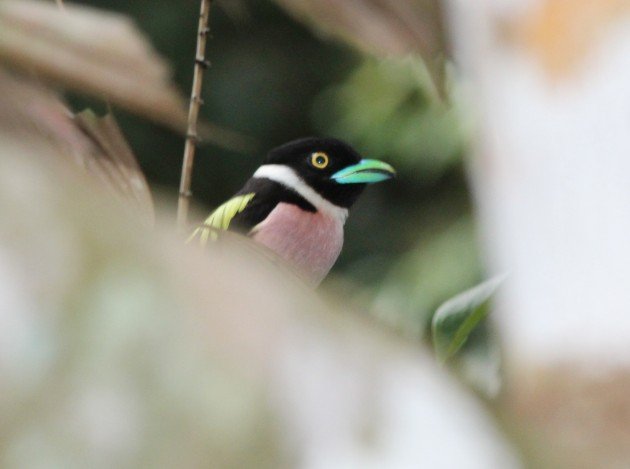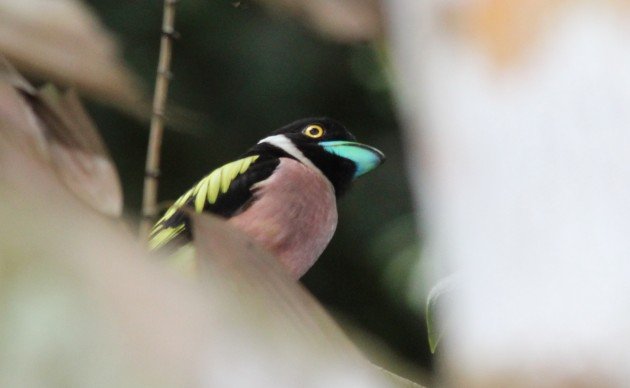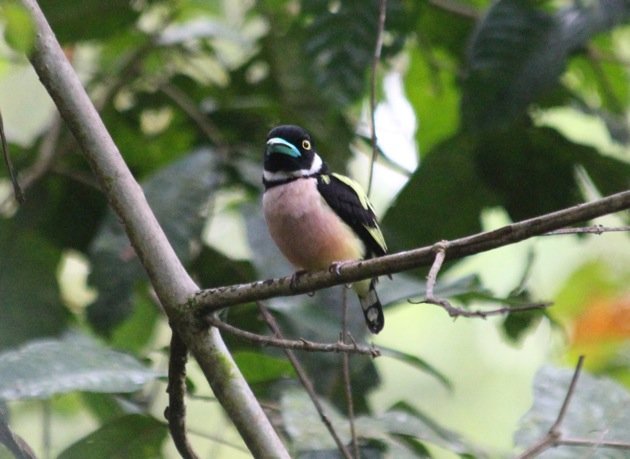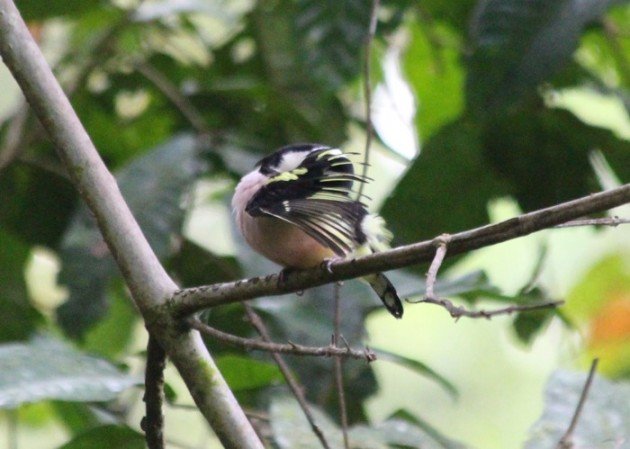
The broadbills are always a family* that birders visiting South East Asia want to see, and who could blame them? They usually take up one or two pretty plates in the guide books, next to the even more desired pittas, and rammed in between the non-passerines and the passerines. They are, with the pittas, the Old World’s only representatives of the otherwise American sub-oscine passerines (the New Zealand wrens being afforded their own distinct lineage). Compared to the drab American sub-oscines (cotingas and Vermillion Flycatcher excepted) they are for the most part bright and gaudy, and in fact their illustrations in books rarely do them any kind of justice. The first broadbills I ever saw, a small flock of Long-tailed Broadbills in Peninsular Malaysia, were jaw dropping to me. I simply never imagined from the plates or photos that a bird could be that beautiful. They are to the canopy what pittas are to the forest floor, avian jewels.
I’m not sure if they are as difficult a family to spot in the wild, but I certainly have had little luck with them in the past. I never saw one in all the time I lived in Africa, in forests where they could be seen. Before I visited Borneo over Christmas I had only seen the one species, but I had a great deal more luck with the family on this trip, seeing four species and hearing a fifth (the famous Whitehead’s Broadbill eluded me, mind). The first I saw in Poring Hot Springs, a very crowded tourist destination that some birders have taken to calling Boring Hot Springs for the paucity of birds to be seen sometimes. I’ll talk about the site in depth on a later post, but during our brief visit to the site on Christmas Day we were not expecting to see too many birds, especially on the rather exciting and crowded canopy walkway. But our excellent guide Adrian called out, near the end of the walkway, a Black-and-yellow Broadbill. It was less the six feet away!
 Black-and-yellow Broadbill (Eurylaimus ochromalus)
Black-and-yellow Broadbill (Eurylaimus ochromalus)
 As you can see from this shot the bill really is broad!
As you can see from this shot the bill really is broad!
No location with a bird this spectacular could be considered boring to me! I was lucky enough to see another example of this species in Danum Valley, during a confusing three minutes where I saw a brief flash of a Diard’s Trogon, and quick moving Rufous Piculets and Rufous-fronted Babblers! The broadbill wins the prize for sitting still long enough for me to get some more photos.
 In this shot you can see the unusual plumage combinations (pink, yellow and black)
In this shot you can see the unusual plumage combinations (pink, yellow and black)
 Bit of a wing preen
Bit of a wing preen
So if you’ve ever wanted to see broadbills, head over to Borneo. This isn’t even the prettiest species they have! For best effect see one at Christmas!
***
*Taxonomic note – some people have been rather split-happy with the broadbills, and call for four families. As with the kingfishers and barbets I’m happy to lump them, even if it means lumping the asities of Madagascar and the rather odd Sapayoa of South America.











I’m going to nickname that “Coloring Book Bird,” because it looks like a color combination only a child with a box of crayons and a coloring book would come up with! Nice find, Duncan, and thanks for sharing with the rest of us.